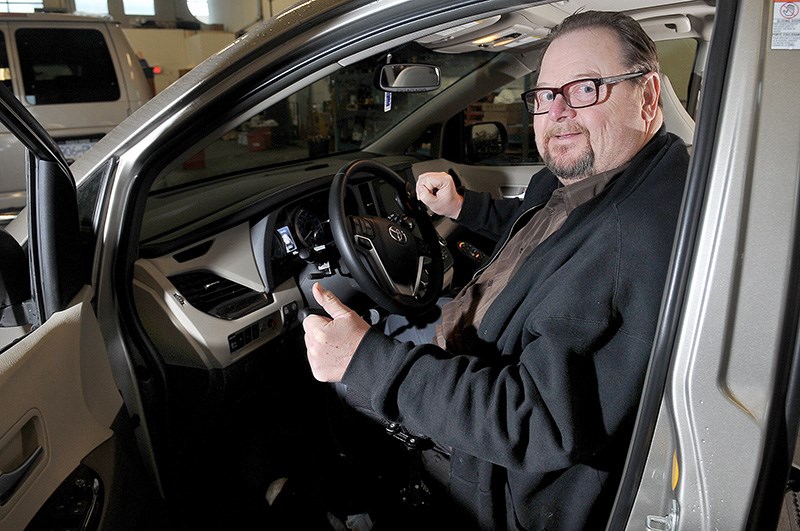Blake Burgess has been driving for the better part of 50 years but when he got his licence just before Christmas, he was like a kid again.
Burgess was injured in a workplace accident in 2011. He lost the use of his legs and the life he had known for so long was turned upside down. Activities he enjoyed, abilities he’d taken for granted, were ripped away from him.
One of those was driving.
After seven months in hospital and a couple of years adapting to his new life, Burgess began to long for his independence. Relying on specialized transit or cab services to get around was cumbersome and time-consuming, especially in the suburbs. He decided he needed to get behind the wheel again.
But when you haven’t got the use of your legs, just jumping back into a car isn’t possible.
Burgess said he spent months researching an appropriate vehicle he could afford and the modifications it would need to accommodate his motorized wheelchair and his disability. Then he’d have to rewire his brain and muscle memory to learn how to drive it.
“It was like starting all over again,” Burgess said.
Peter Faminoff has been modifying vehicles for people with physical limitations, and then teaching them to drive them, since 1991. His Columbia Driver Training Centre in Port Coquitlam offers specialized instruction for people with disabilities, which, he said, comprises about a third of his business.
Faminoff said the first hurdle to overcome is convincing his disabled clients they can drive.
“The client has been programmed [to believe] they’ll never drive again,” Faminoff said. “We have to get them to believe they can do it.”
Faminoff said he has taught drivers with various degrees of paralysis from strokes or accidents, and even ones with missing limbs. All take a degree of patience and understanding about what they’re going through.
“You have to learn new habits, not just new ways,” he said.
For Burgess, that meant always remembering to put one hand on the control knob on the steering wheel of his modified van and the other on the hand-operated accelerator and brake control because if he rests both hands on the wheel, his muscle memory reverts to his legs, which, of course, no longer work.
“You have to imprint it,” he said. “When an emergency situation comes up, you don’t want to think about it.”
Burgess has had about a half dozen training sessions in his vehicle.
And when his driving assessment officer was smiling at the end of his test, “it felt like I was 16 again. It was like a new chapter in my life was about to start.”
A chapter that now includes being able to drive himself to the grocery store, social gatherings and even concerts at Rogers Arena.
“You take transportation and routine chores as a matter of habit when you’re able-bodied,” Burgess said. “When you’re disabled, all the rules change.”
• To find out more about driver training for people with disabilities, go to https://www.cdtcdevelopmentcentre.com.



